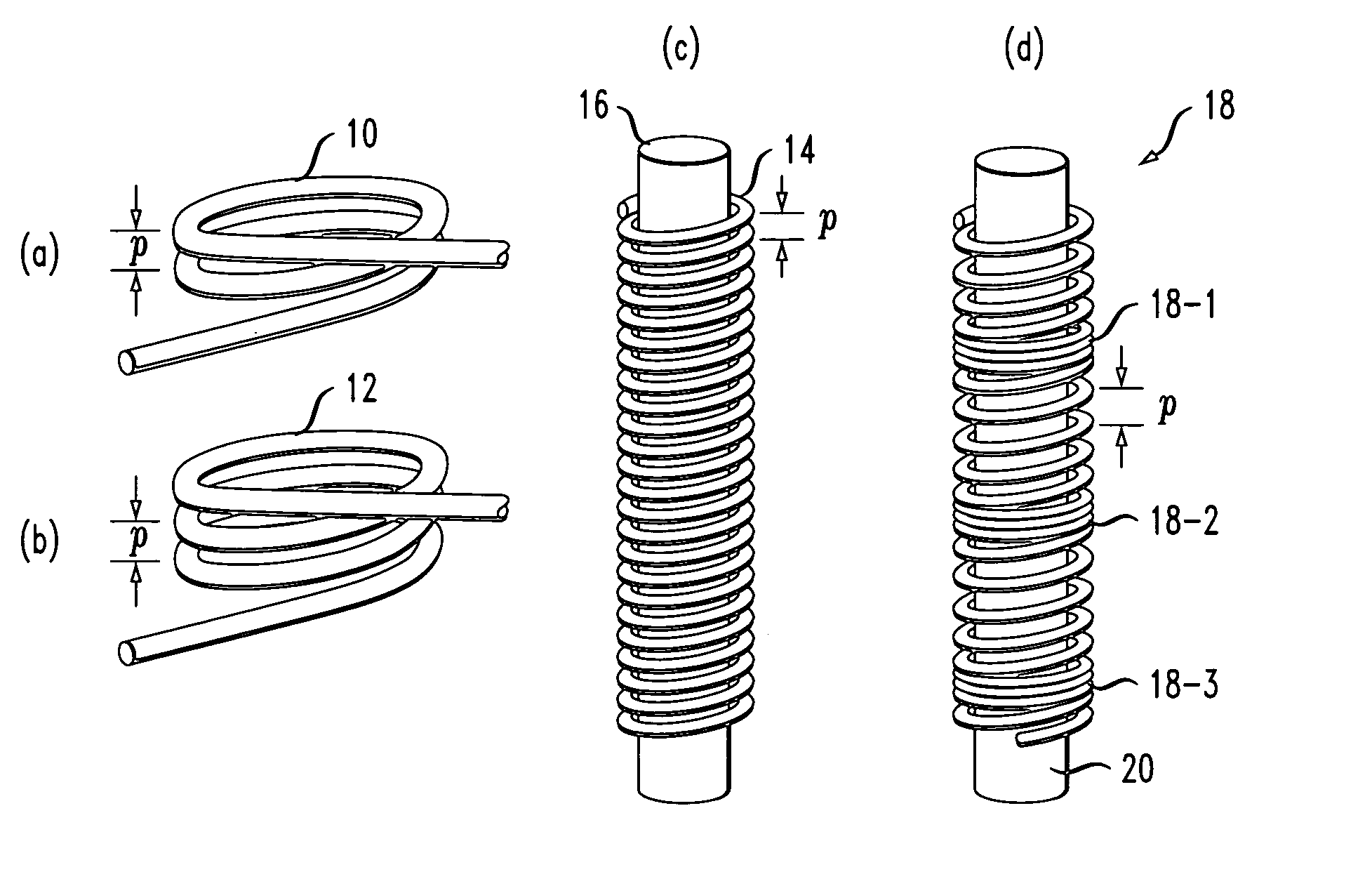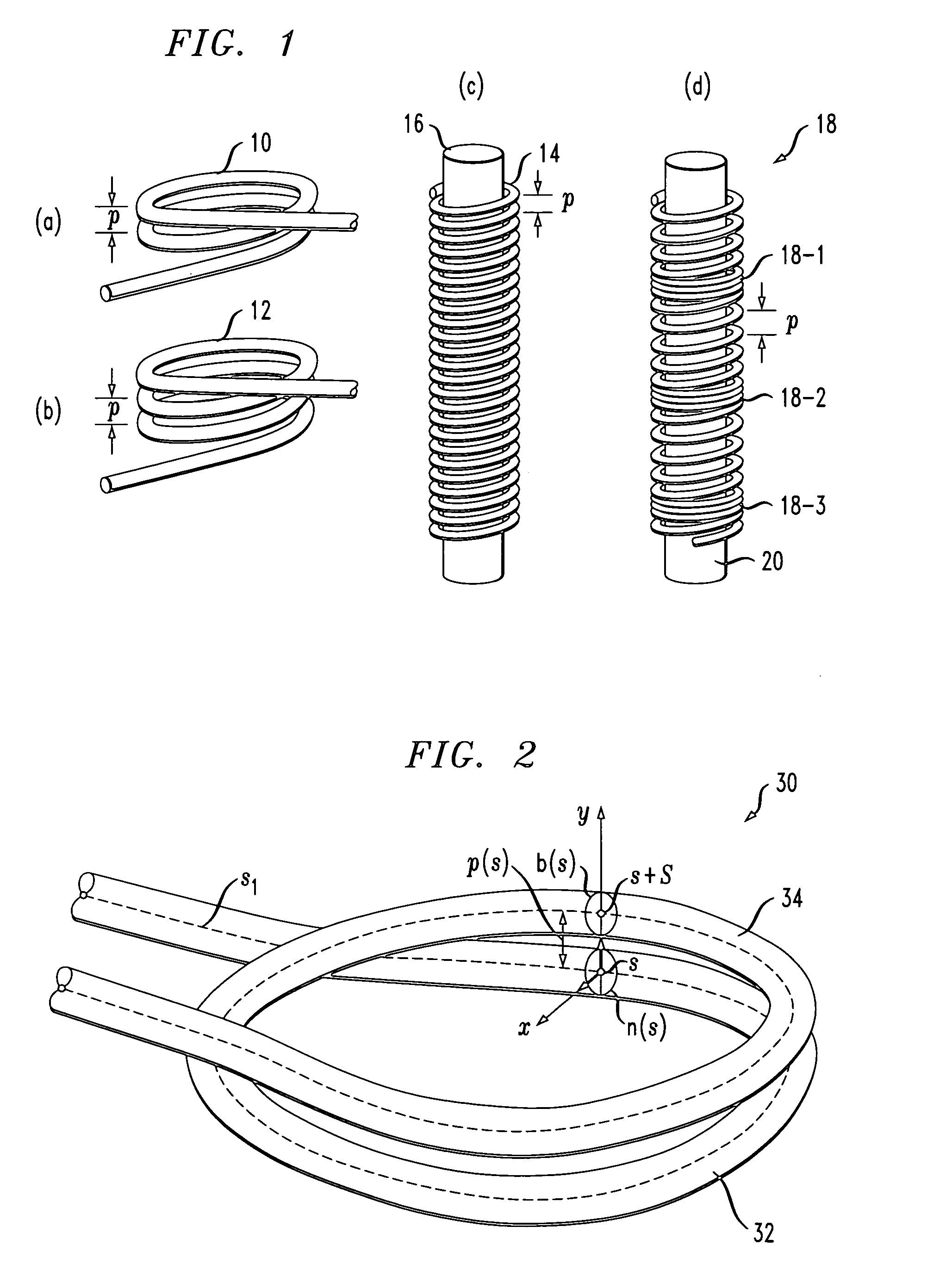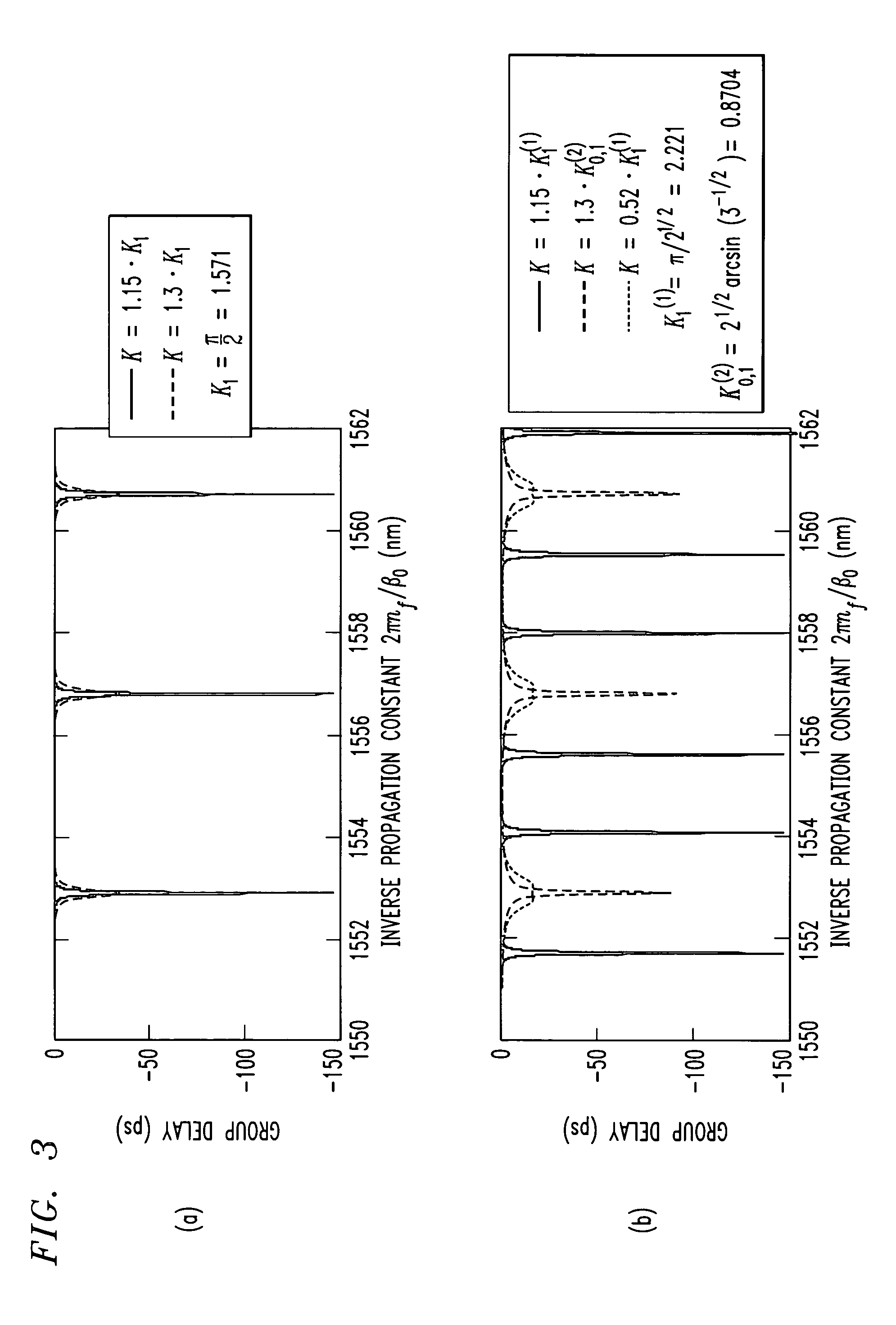Optical fiber microcoil, resonant structure and method of making the same
a technology of optical fiber and microcoils, which is applied in the field of optical fiber microcoils, resonant structure and method of making the same, can solve the problems of limiting the usefulness of such devices, many difficulties, and the inability of conventional etching processes to routinely form such smoothness, and achieves the effect of easy formation
- Summary
- Abstract
- Description
- Claims
- Application Information
AI Technical Summary
Benefits of technology
Problems solved by technology
Method used
Image
Examples
Embodiment Construction
[0022]The present invention, as will be described in detail below, proposes the use of a coiled single mode optical microfiber (for the purposes of the present invention, the term “microfiber” is defined as a fiber with a diameter on the order of one micron, or less than (or on the order of) the wavelength of the electromagnetic field), as illustrated in FIGS. 1(a)-(d), to achieve self-coupling between turns, rather that using a closed loop optical path as in prior art arrangements. In one embodiment, the inventive microfiber coil can be wound around a cylindrical core (e.g., an optical fiber with larger diameter) wound into a self-touching loop, or be formed as a ring node, as in the prior art. The ideal microfiber “coil only” structure, such as those illustrated in FIGS. 1(a) and (b), can be created if the refractive index of the cylindrical core is low enough and matches the refractive index of the environment.
[0023]FIG. 1 illustrates four exemplary microfiber coils (also referre...
PUM
| Property | Measurement | Unit |
|---|---|---|
| inner diameter | aaaaa | aaaaa |
| diameter | aaaaa | aaaaa |
| diameter | aaaaa | aaaaa |
Abstract
Description
Claims
Application Information
 Login to View More
Login to View More - R&D
- Intellectual Property
- Life Sciences
- Materials
- Tech Scout
- Unparalleled Data Quality
- Higher Quality Content
- 60% Fewer Hallucinations
Browse by: Latest US Patents, China's latest patents, Technical Efficacy Thesaurus, Application Domain, Technology Topic, Popular Technical Reports.
© 2025 PatSnap. All rights reserved.Legal|Privacy policy|Modern Slavery Act Transparency Statement|Sitemap|About US| Contact US: help@patsnap.com



